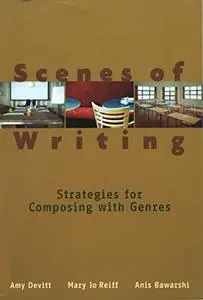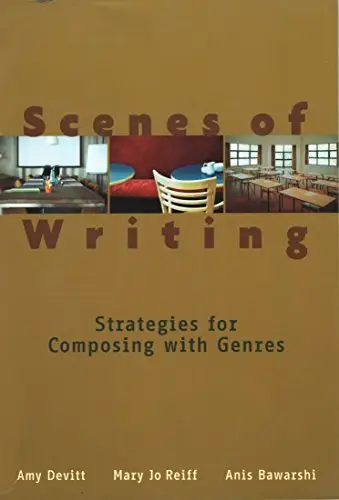Scenes of Writing: Strategies for Composing with Genres by Anis Bawarshi, Mary Jo Reiff, Amy Devitt
English | January 3, 2004 | ISBN: 032106111X | PDF | 608 pages | 211 MB
English | January 3, 2004 | ISBN: 032106111X | PDF | 608 pages | 211 MB
Scenes of Writing teaches students how to use genres to understand and write effectively for any situation, whether academic, workplace, or public. Based on current research in rhetorical genre theory that defines genres as rhetorical and social actions (the ways people make their way in the world, from thank you notes and horoscopes to editorials and progress reports to analysis papers and legal briefs), this textbook helps students gain and use knowledge of genres to make more critically informed and effective writing decisions within various scenes of writing. Learning such strategies provides students with transferable skills and knowledge to adapt their writing wherever and whenever they need to—in college and in the rest of their lives.
To help students see and understand their possible choices, Scenes of Writing teaches stu¬dents strategies for observing and analyzing writing scenes, showing them how the genres produced in those scenes reflect various situations—their readers and writers, purposes, subjects, and settings. Understood in this way, genres are kinds of texts that help writers gain access to and participate in the scenes in which they are used.
Structurally, Scenes of Writing moves from teaching students how to observe a writing scene and its situations (the readers, writers, purposes, subjects, and settings), to analyzing and critiquing the genres used to participate within the situations and scenes. Students examine the textual patterns of genres (content, appeals, structure, format, sentences, words) and what they reveal about the people who use the genres (their values and beliefs), the scenes in which the genres are used, and the activities that take place there. The book also focuses students' attention on the ways that they can critique existing genres and invites them to write differently, to design changed genres that meet different goals or reinforce different values and beliefs. Students apply this knowledge to the analysis and production of genres in academic, workplace, and public contexts.
Teachers and students alike will appreciate that the book’s approach cultivates transferable skills by helping students use genre knowledge to read and write their way into different situations inside and outside of a writing class. Students learn how to read contexts and then turn that reading of context into their writing in context, becoming more agile and astute writers who make informed writing choices as they negotiate among and participate in various scenes of writing. In the end, Scenes of Writing helps students participate more meaningfully, critically, and effectively as writers.



